(3-minute read)
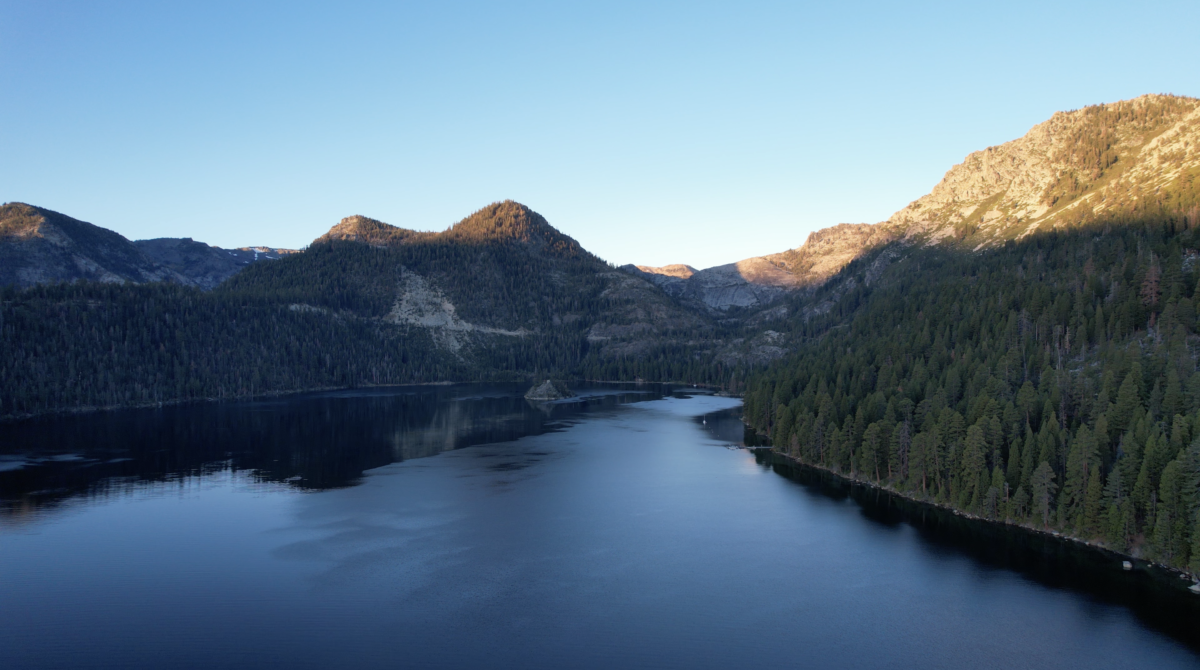
I’m finally a scientific diver! I have been back home for the past month bouncing from Bodega Bay and South Lake Tahoe taking the UC Davis AAUS Scientific Diver Course. I have been wanting to take this course for over a year now and I am so happy to finally have completed it.
AAUS stands for the American Academy of Underwater Sciences and it’s an organization with the main goal to advance and facilitate safe and productive scientific diving. Colleges and universities, government agencies, museums, environmental and archaeological consulting firms, and community science groups all use diving as a research tool and AAUS produces the standards for the training to ensure the upmost safety.
Originally, being so new to the world of scientific diving, I didn’t fully understand why this course was necessary. “I’m an advanced open water and rescue diver already, why can’t I just get in the water and help with people’s research?” was a frequent question running through my head this past year. I didn’t fully grasp why this course was necessary. All I knew at first was that it was difficult to schedule and took a long time to complete. However, early in my scholarship year, I was lucky enough to spend a few days with incoming AAUS president Jessica Keller, who gave me a thorough explanation as to why recreational open water diving was a completely different thing in comparison to scientific diving and why this course was necessary. And after this month I 100% get it now.
Week 1 – Bodega Bay, CA
The course started at UC Davis’s Bodega Marine Lab (BML) where we spent a week attending lectures, practicing dive skills, and going through rescue scenarios.
This is where the class first got together, introduced themselves, etc., and honestly, this is one of the first dive courses I’ve taken where all students where able to work together so smoothly. With everyone having varying levels of experience, we were able to work together throughout this week and help each other with drills or diving concepts (or gen z slang) whenever needed.

We did a unique mix of exercises underwater, a lot of which I’ve never done before so it was quite the learning curve at times. One of the hardest things for me was putting just the right amount of air in a lift bag as well as trying to measure and legibly write stuff down wearing such thick gloves — but I pulled through!

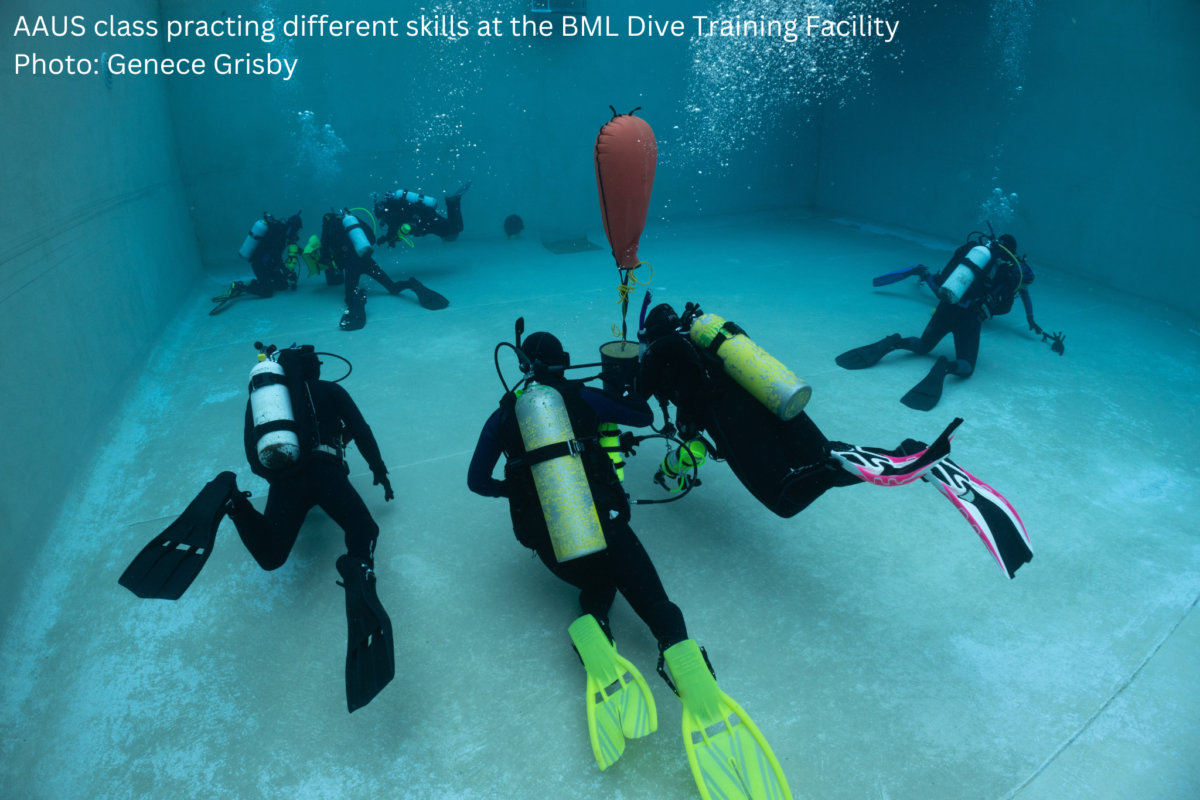
I think a lot of the students’ favorite exercise from this week was measuring the canoe that was dropped into the pool (we all felt like cool scientists!).

Week 2 – Emerald Bay, South Lake Tahoe, CA
The second portion of the course ended with us going camping for a few days and diving in clear and glassy Lake Tahoe. Here, our focus was to finish some check-out dives for the course and help California State Parks locate some nearby wrecks that had shifted.
As a class we also got to make group dinners, talk and play music by the campfire, watch the sun/moonrises, and overall have a good time while finishing up the course.
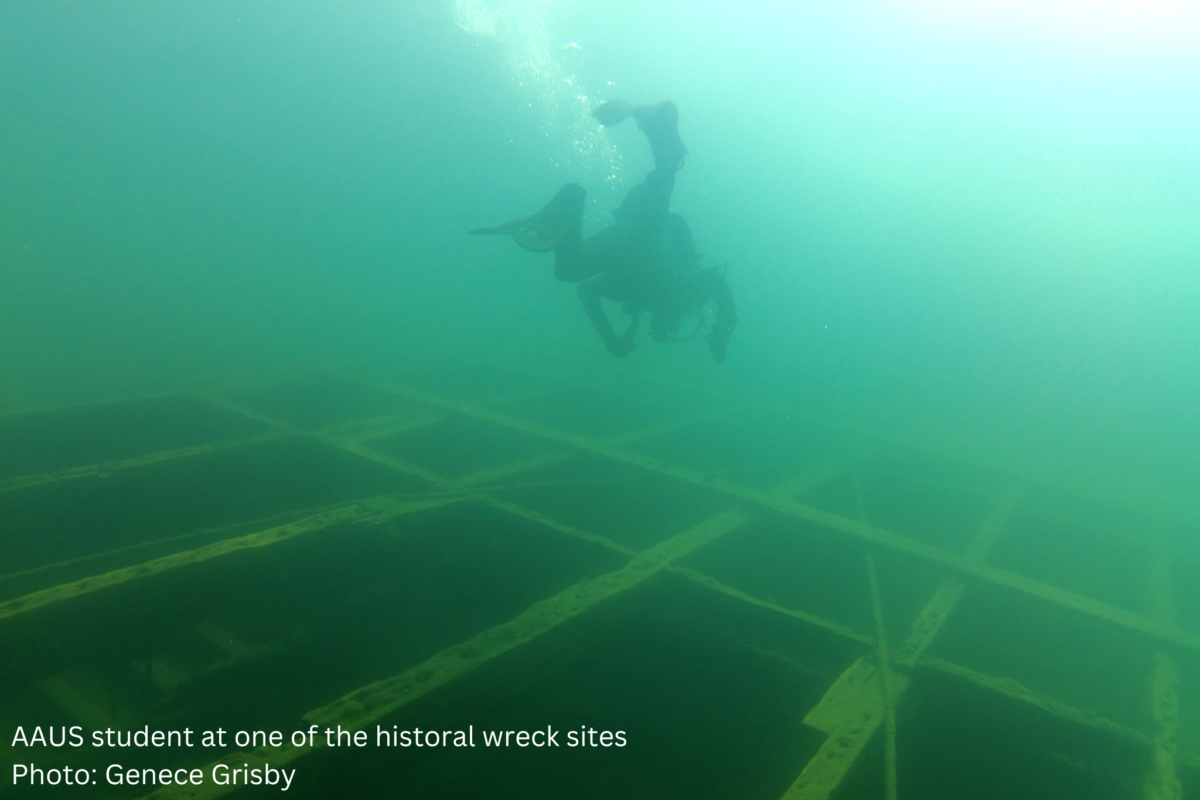
Despite the constant thought of a black bear trying to get into my tent, it was so cool being out in nature and waking up to such a gorgeous place. I loved it.
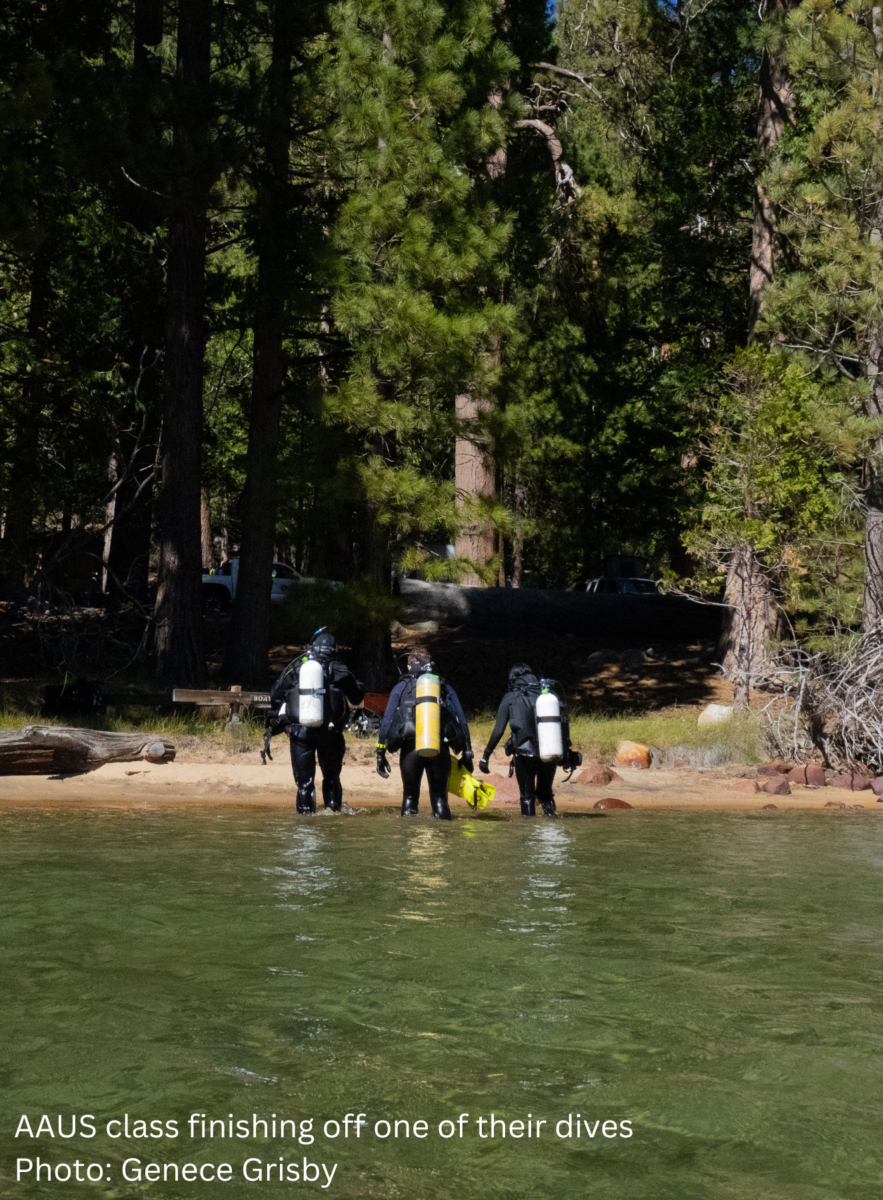

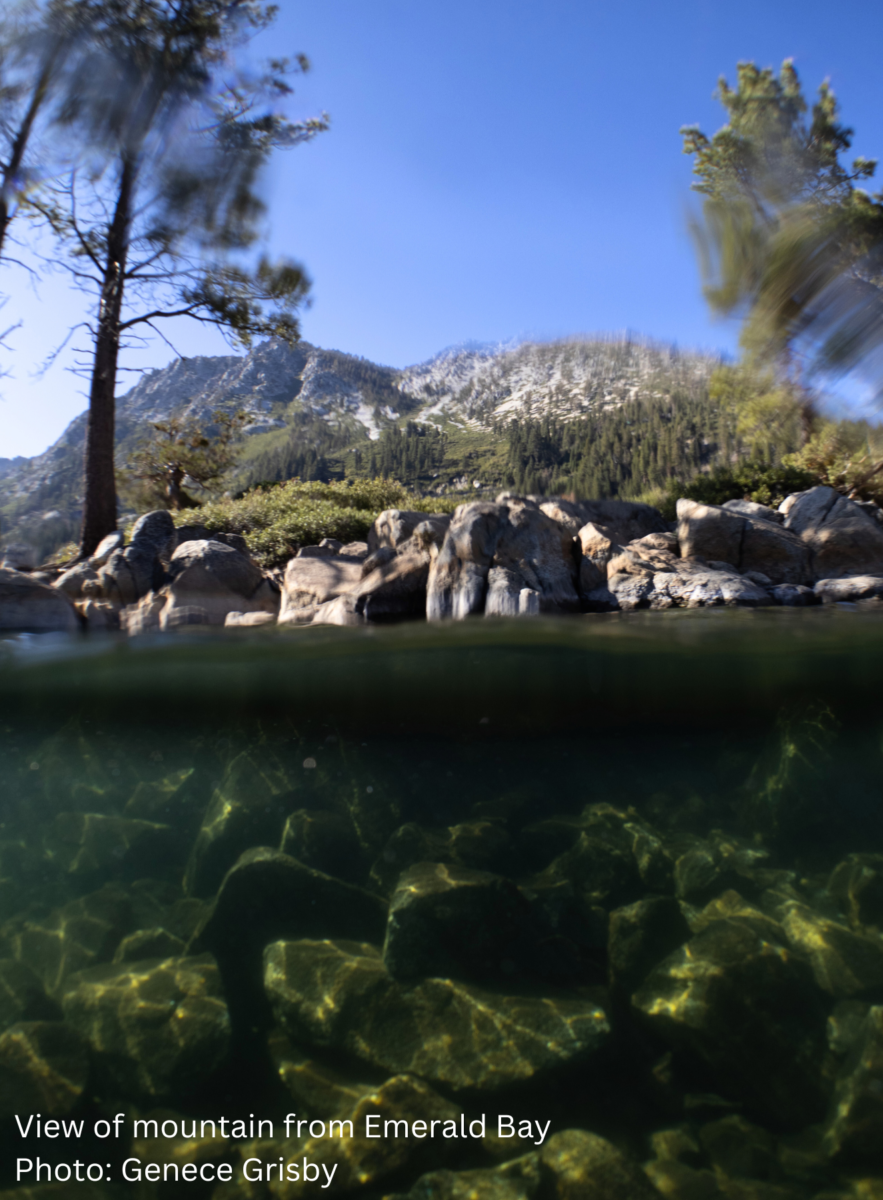
Overall, it was an amazing fun-filled week and I am looking ahead to all the future scientific diving my classmates and I will be able to do!

Thank you so much to Bodega Marine Lab’s Dive Safety Officer Jason Herum for inviting me to take this wonderful course. I am excited to continue forward and grow as a scientific diver!
Thank you to the Our World-Underwater Scholarship Society and our sponsor Rolex for making this scholarship experience a possibility. I would also like to thank Reef Photo and Video, Nauticam and Light and Motion for my underwater camera setup as well as Aqualung, Fourth Element, Suunto, Halcyon, and DUI for my diving equipment.